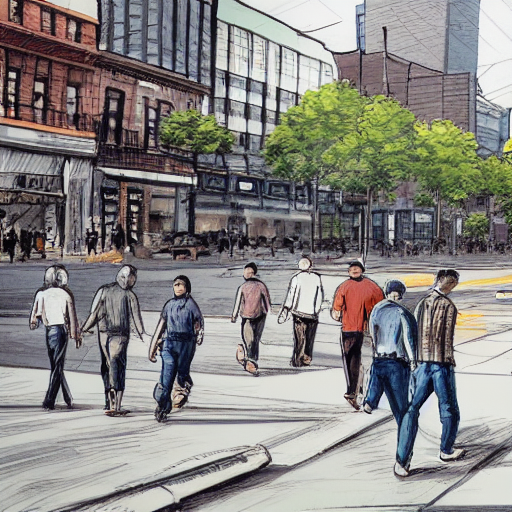One of the truisms of pandemics is that they’re a function of public health, which means that their duration relies on public perception as much as it does on, say, the actual science of the virus. Hell, our president recently declared that COVID is over, which speaks more to the US response to SARS-CoV-2 virus and its family of variants, than the impact of the virus itself. In direct contrast, China is still keeping its COVID Zero policy and reacting very strongly to any outbreaks or detections of the virus in the country.
But, assuming that we in America are indeed getting over our 2½ years of COVID constraints and personal inconveniences, it’s fair to start reflecting on which of the temporary measures brought on by the pandemic are staying permanent. Admittedly, it was fun to speculate what the world would look like in a post-COVID world; in the midst lockdowns and vaccines and masks, it became fashionable to talk about how COVID didn’t change society’s trajectories as much as it accelerated them. Certainly, some of those predictions were also projecting hope for a better future, both in ending the reign of this virus but also in crafting opportunity out of crisis. We were, on some level, wishing to bring about a decade of societal change in a year’s time.
We’ve already seen the effects of COVID come and go in some areas. In keeping tabs on the stock market, a lot has been made about the set of companies which had ridden upwards on the tailwinds of pandemic-driven behavioral changes, and are now crashing back down on symmetric headwinds when evidence suggests that this shift is not permanent. Diverse industries ranging from Peloton to Netflix to Zoom are on business rollercoasters, codified and updated in their enterprise valuations in real time. Their meteoric rise to success, and subsequent inability to maintain those levels of success, is a solid signal that the mindshare ceded to fretting about the pandemic and its associated lifestyle changes have largely dissipated—perhaps with some residual effects, but even that impact is drowned out by raising interest rates and recession fears.
Another COVIDism I’ve been keeping my eye on is the return to office ↔︎ work from home dichotomy. The return of in-person office work—or lack thereof—has itself been a proxy for sentiment towards the pandemic, and the degree of return itself is an indicator of whether we’re returning to normalcy. To that end, most reports do indicate that office occupancies rose in 2022, and downtowns around the country no longer project that eerie post-apocalyptic emptiness that characterized those early periods of lockdown.
Well, except for San Francisco and the Bay Area. With our tech-heavy industry focused on software development, a lot of our jobs can be and are now performed remotely; the return to offices for tech workers has been at best uneven. At the same time, while the pendulum swung one way in 2021 when many pandemic-boosted tech companies went public or enjoyed massive valuation gains, those gains have all been erased in 20221 and we have instead taken the vanguard in employee layoffs instead. The implications are a shrunken downtown, reduced tax revenues leading to fewer services, and a prolonged path to economic recovery2.
I’d be remiss to not acknowledge the real problems that a supposedly endemic COVID has left with us. Long COVID is a new ailment that we don’t understand and have no reliable treatments for; our healthcare systems stretched beyond their breaking point and need reinforcement; we face massive teacher shortages amidst pandemic burnout. Yes, in some of these areas we may be pulling the future forward into the present, but there’s a whole new host of gnarly problems that we’ll have to solve in the years and decades to come.
And then some; the NASDAQ had already entered bear market territory with a 20% correction from peak back in March, and it’s continued to mostly drop since.↩
Although, San Francisco has always been a boom-and-bust town.↩




